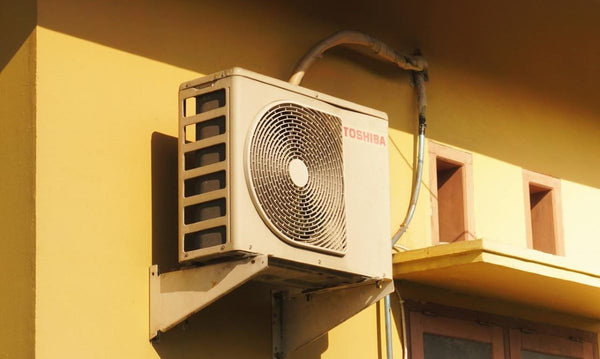Introduction to Washable HVAC Filters
The quest for sustainability has permeated every aspect of our lives, from the food we eat to the cars we drive. Yet, often, it's the smallest changes that hold the most promise for a greener future. Among these, the switch to washable HVAC filters stands out as a simple, yet impactful shift. But what exactly are washable HVAC filters, and why are they gaining traction as an eco-friendly alternative?
The Environmental and Economic Imperative
Traditional HVAC filters are designed for short-term use. Every few months, they're discarded and replaced, leading to an ongoing cycle of waste. Not only does this practice contribute to environmental degradation, but it also adds up in costs. Enter washable HVAC filters: a sustainable solution that addresses both issues head-on. With the ability to clean and reuse these filters, homeowners can significantly reduce their environmental footprint while saving money over time.
Overview of Washable Filters
Washable HVAC filters are not a new concept, but recent advancements have brought them into the spotlight. Made from durable materials designed to withstand multiple cleanings, these filters can last for several years with proper care. Their design often incorporates layers of washable media that trap dust, pollen, and other airborne particles, much like their disposable counterparts. However, the key difference lies in their reusability, which marks a significant step forward in sustainable home maintenance.
The Evolution of Air Filtration
From Disposable to Reusable
The journey from disposable to reusable HVAC filters mirrors the broader shift towards sustainability in various industries. Initially, air filters were seen as a consumable, with little thought given to their environmental impact. However, as awareness of sustainability grew, so did the demand for products that could reduce waste without sacrificing performance. Washable HVAC filters represent a pivotal innovation in this journey, offering a practical alternative that aligns with eco-friendly values.
How Technology Is Shaping Greener Solutions
Technological advancements have played a crucial role in the development of washable HVAC filters. New materials and manufacturing techniques have enabled the creation of filters that can efficiently capture pollutants while being durable enough to withstand regular washing. These innovations not only enhance the filters' performance but also their usability, making them a viable option for the average homeowner.

Photo by Fandy Much
Washable HVAC Filters: A Closer Look
Design and Material Innovations
The design of washable HVAC filters focuses on balancing filtration efficiency with durability. Typically, these filters use a combination of synthetic fibers and metal frames, offering robustness and ease of cleaning. Some filters incorporate antimicrobial coatings to prevent the growth of mold and bacteria, ensuring that the air quality remains high even with repeated use.
Functionality and Air Quality Impact
Concerns about whether washable filters can match the air quality provided by disposable ones are common. Studies and real-world use have shown that high-quality washable filters can indeed maintain excellent air quality. Their performance is often comparable to disposable filters, with the added benefit of being adjustable to specific needs through varying cleaning frequencies.
Practical Experience with Washable Filters
Installation Process
Switching to a washable filter is remarkably straightforward. Most filters are designed to fit standard HVAC systems, making the transition seamless. The installation process mirrors that of disposable filters, requiring no additional tools or modifications to the system.
Maintenance and Cleaning
One of the most appealing aspects of washable HVAC filters is their ease of maintenance. Cleaning typically involves rinsing the filter under running water or using a gentle vacuum to remove dust. For a deeper clean, mild detergents can be used, ensuring the filter is thoroughly dried before reinstallation. This simplicity encourages regular maintenance, leading to better air quality and filter performance.
Real-World Effectiveness
Feedback from users who have made the switch to washable filters often highlights their effectiveness in capturing dust, pollen, and other allergens. While some initial skepticism exists, most find that with proper maintenance, these filters provide a clean and healthy indoor environment. Moreover, the satisfaction of contributing to environmental conservation adds to the positive experience.

Photo by Lutfi Elyas
Cost Analysis: Savings over Time
Initial Investment vs. Ongoing Savings
While the upfront cost of washable HVAC filters is higher than their disposable counterparts, the long-term savings are significant. By eliminating the need for frequent replacements, homeowners can recoup their initial investment within a few years, depending on the filter's lifespan and the cost of disposable filters.
Comparative Analysis with Disposable Filters
A detailed cost comparison reveals that washable filters not only save money but also offer superior value. Considering the environmental cost of disposable filters, the savings extend beyond financial benefits, contributing to a more sustainable and responsible approach to home maintenance.
Environmental Benefits
Reducing Waste and Carbon Footprint
One of the most compelling arguments for switching to washable HVAC filters is their positive impact on the environment. Traditional disposable filters contribute significantly to landfill waste, with millions of used filters discarded annually. Washable filters, on the other hand, can last for several years, drastically reducing the amount of waste generated. Furthermore, by minimizing the production and transportation of disposable filters, carbon emissions associated with these processes are also reduced, making washable filters a win-win for both homeowners and the environment.
Contribution to Sustainable Living Practices
Adopting washable HVAC filters is a practical step towards sustainable living. It's a choice that reflects a commitment to reducing personal and collective environmental footprints. This decision aligns with broader sustainable practices, such as recycling, reducing energy consumption, and choosing eco-friendly products, reinforcing the importance of making environmentally responsible decisions in everyday life.

Photo by David Brown
User Experience and Testimonials
Case Studies
Highlighting specific case studies of individuals or families who have switched to washable HVAC filters can provide real-world insights into their benefits. These stories often emphasize not only the cost savings and environmental benefits but also the satisfaction of contributing to a healthier planet. For instance, a family might share how making the switch has alleviated allergy symptoms for a household member, thanks to the filter's effectiveness in capturing allergens.
Consumer Feedback
General feedback from users who have adopted washable filters tends to be positive, with many appreciating the ease of maintenance and the peace of mind that comes from a more eco-friendly choice. Some users note the initial adjustment period, such as remembering to clean the filter regularly, but overall, the transition is seen as straightforward and worthwhile.
Challenges and Considerations
Addressing Common Concerns
Potential users of washable HVAC filters may have concerns about their effectiveness, maintenance requirements, and initial cost. It's important to address these concerns transparently, noting that while washable filters require a bit more effort in terms of cleaning, their long-term benefits outweigh these minor inconveniences. Additionally, the market offers a range of options to suit different budgets and HVAC systems, making it easier to find a filter that meets specific needs.
Limitations and Solutions
While washable HVAC filters are suitable for most homes, they may not be the best choice for every situation. For example, individuals with severe allergies or respiratory conditions may require specialized filtration solutions. In such cases, consulting with an HVAC professional can help determine the most appropriate type of filter. Moreover, advancements in filter technology continue to expand the options available, ensuring there are effective solutions for a wide range of needs.
Conclusion: A Step Towards a Sustainable Future
Embracing washable HVAC filters represents more than just a practical choice for home maintenance; it's a step towards a more sustainable and responsible way of living. By choosing reusable filters, homeowners can significantly reduce waste, save money, and contribute to a healthier environment. While the transition may require a shift in habits, the long-term benefits for both the planet and personal well-being are undeniable. As we continue to seek ways to live more sustainably, simple choices like this can have a profound impact, moving us closer to a future where eco-friendly practices are the norm, not the exception.
FAQs
1. How often should I clean my washable HVAC filter?
The cleaning frequency for washable HVAC filters depends on several factors, including the air quality in your area, whether you have pets, and the level of activity within your home. As a general guideline, it's recommended to check and potentially clean your filter every 1-3 months. However, homes in areas with higher levels of dust and allergens, or those with pets, might require more frequent cleaning. Monitoring the filter's condition and cleaning it as needed will ensure optimal air quality and filter performance.
2. Can washable HVAC filters be as effective as disposable ones?
Yes, high-quality washable HVAC filters can match the effectiveness of disposable filters, especially when it comes to capturing dust, pollen, and other common airborne particles. The key to maintaining their effectiveness is regular cleaning and proper maintenance. Some washable filters are also available with high MERV (Minimum Efficiency Reporting Value) ratings, similar to disposable options, providing efficient filtration for a variety of needs.
3. Are washable filters suitable for all HVAC systems?
Most HVAC systems can accommodate washable filters, but it's important to check the manufacturer's recommendations for your specific system. The size, design, and airflow requirements can vary, so ensuring compatibility is crucial for maintaining system efficiency and avoiding potential damage. If unsure, consulting with an HVAC professional can help determine the best filter option for your system.
4. What's the lifespan of a washable HVAC filter?
The lifespan of a washable HVAC filter can vary depending on the brand, material quality, and how well it's maintained. On average, these filters can last from 3 to 5 years, with some high-quality models potentially lasting even longer. Regular cleaning and proper care are essential to maximizing the lifespan of your washable filter.
5. How can I ensure the best performance from my washable filter?
To ensure the best performance from your washable HVAC filter, adhere to the following practices:
Regular Cleaning: Clean your filter according to the manufacturer's instructions or more frequently if needed, based on your home's air quality.
Proper Drying: After washing, ensure the filter is completely dry before reinstalling it to prevent mold or mildew growth.
Gentle Handling: Be gentle when cleaning and handling your filter to avoid damaging the filter media or frame.
Regular Checks: Even if the filter doesn't seem dirty, check it regularly for any signs of wear or damage.
Correct Installation: Ensure the filter is properly installed with the correct orientation and fit to prevent bypass air.
By following these guidelines, you can maintain an efficient, effective, and long-lasting washable HVAC filter, contributing to better indoor air quality and environmental sustainability.
Featured image: Photo by cottonbro studio





